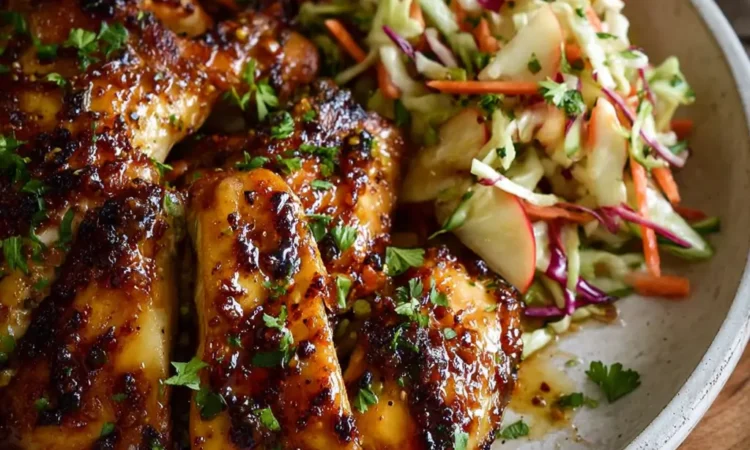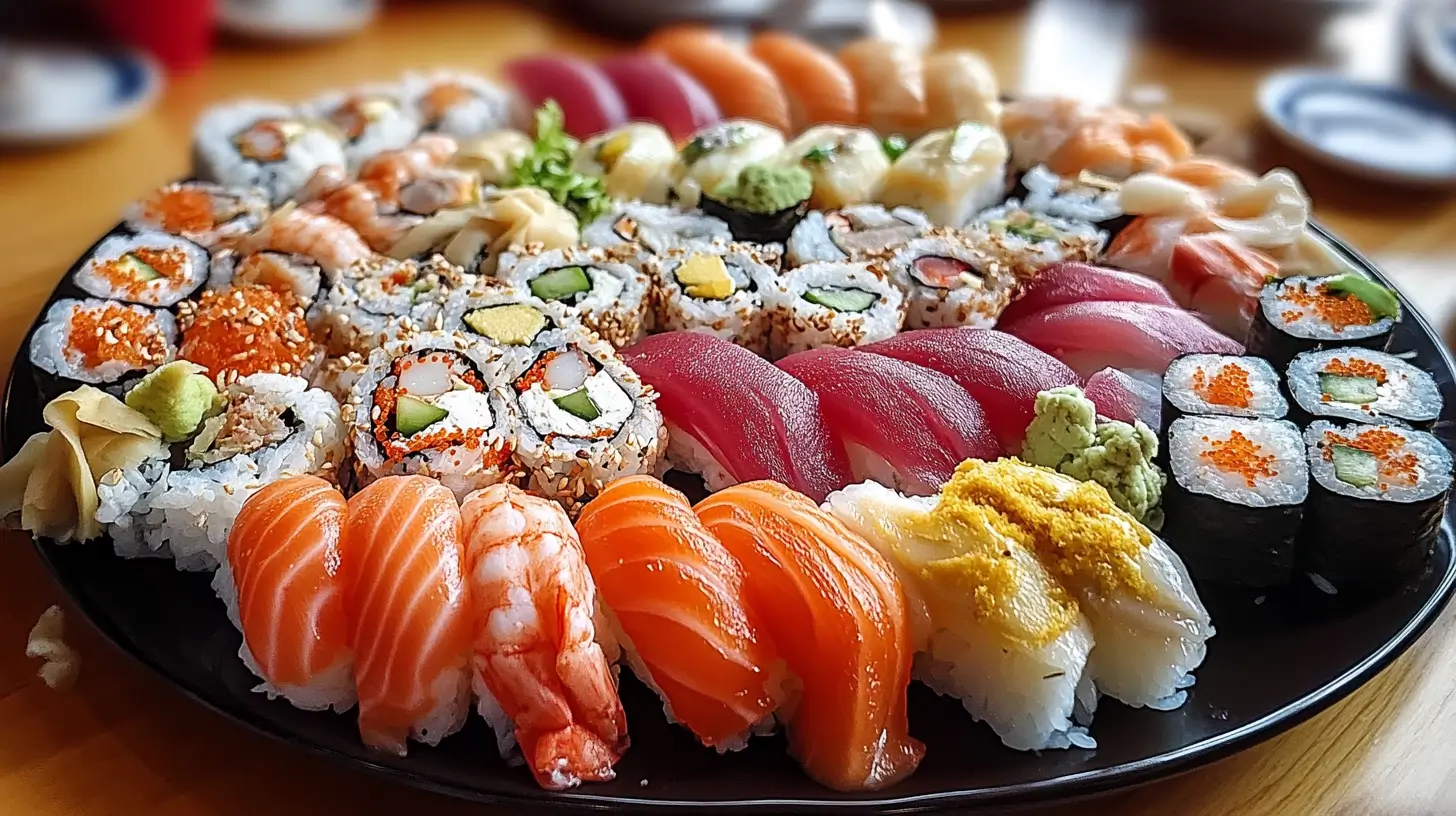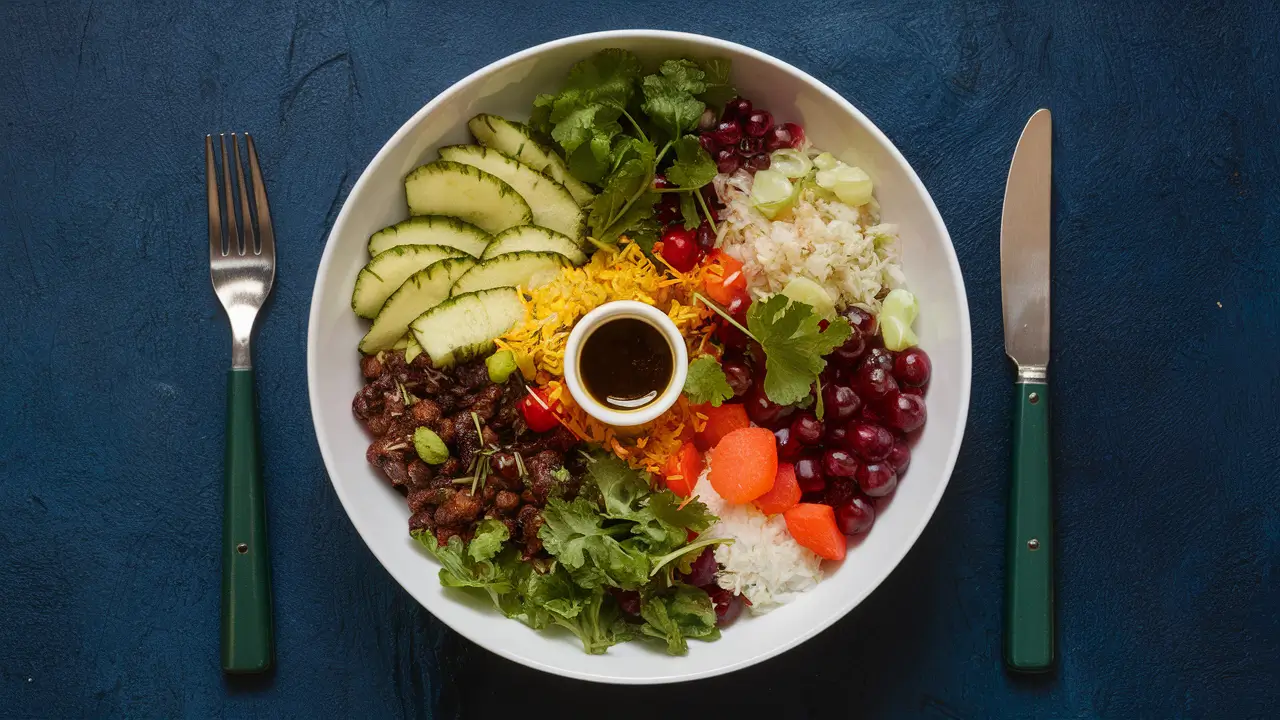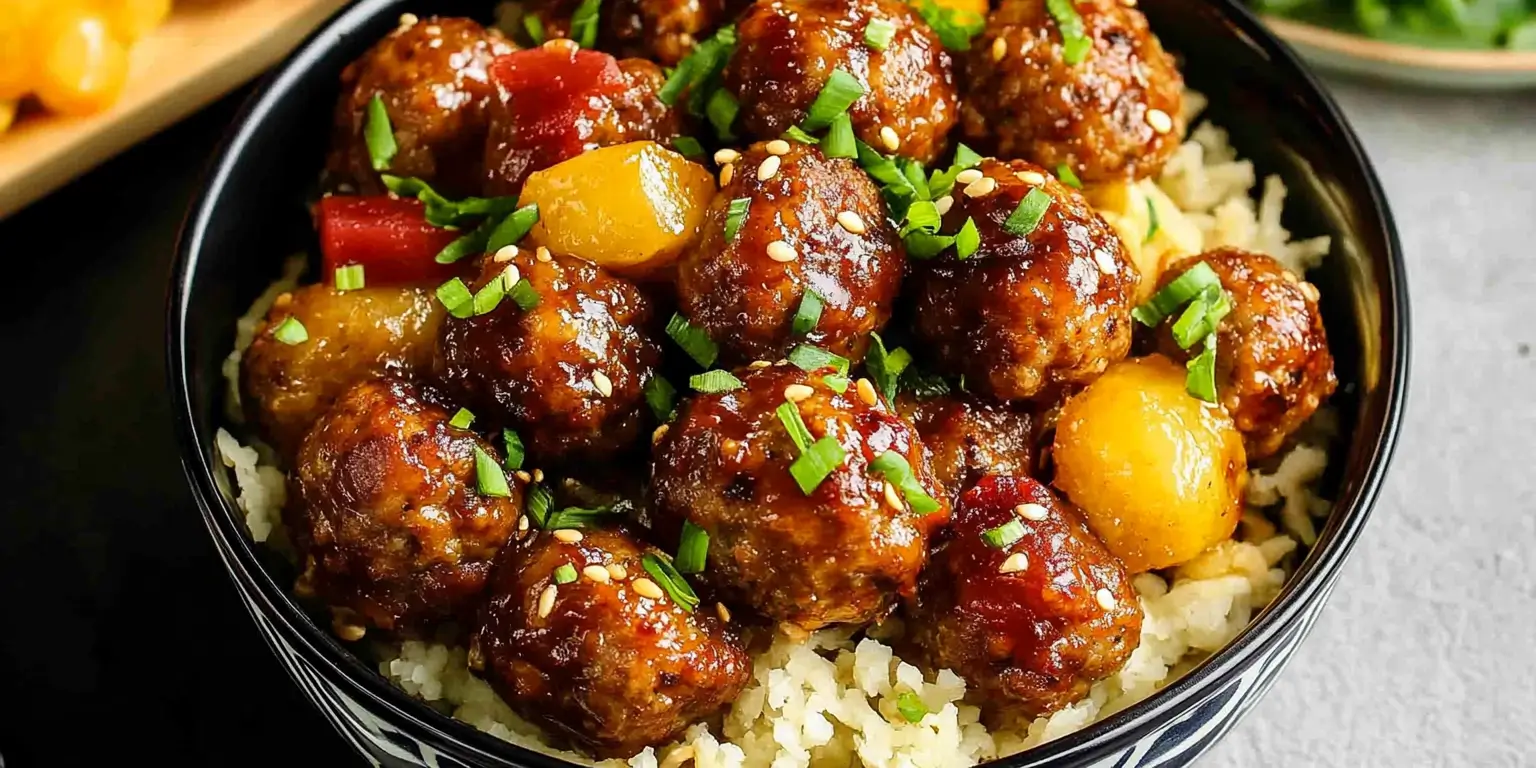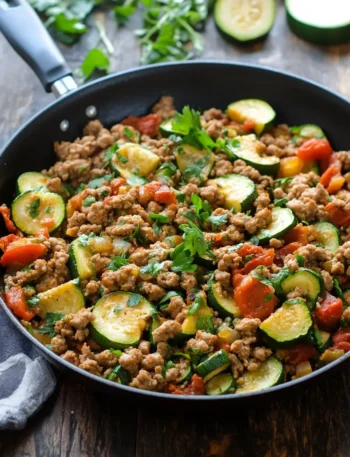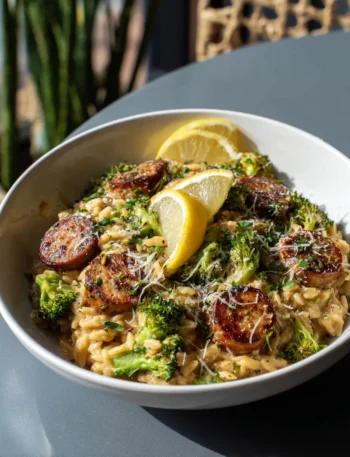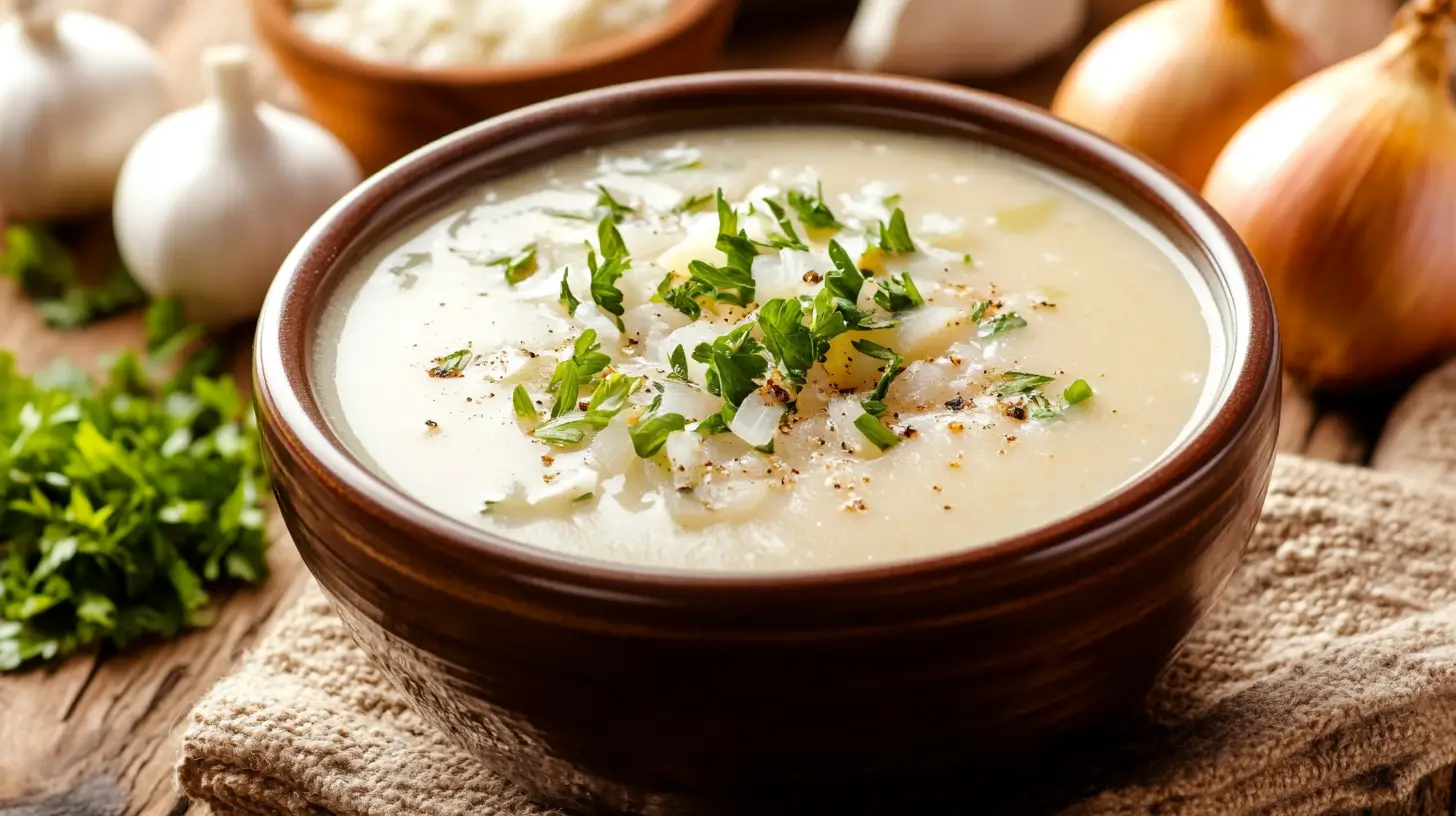Welcome to your new favorite fall dinner. This Sticky Apple Cider Chicken with Crisp Autumn Slaw isn’t just a meal, it’s a celebration of seasonal produce and contrasting textures. Tender, glazed chicken thighs simmer in a sweet‑tart apple cider sauce, then finish under a bubbling glaze until they’re caramelized and glossy. On the side is a crunchy, colorful slaw that combines shredded cabbage, carrots and tart apples, all bound together with a light apple‑cider‑vinegar dressing. The combination offers layers of flavor and nutrition: apples bring fiber and vitamin C, cabbage supplies vitamin C, vitamin K and more than 2 grams of fiber per cup, while carrots provide beta‑carotene and essential vitamins like A and K. The result is a cozy dish that tastes indulgent yet feels wholesome.
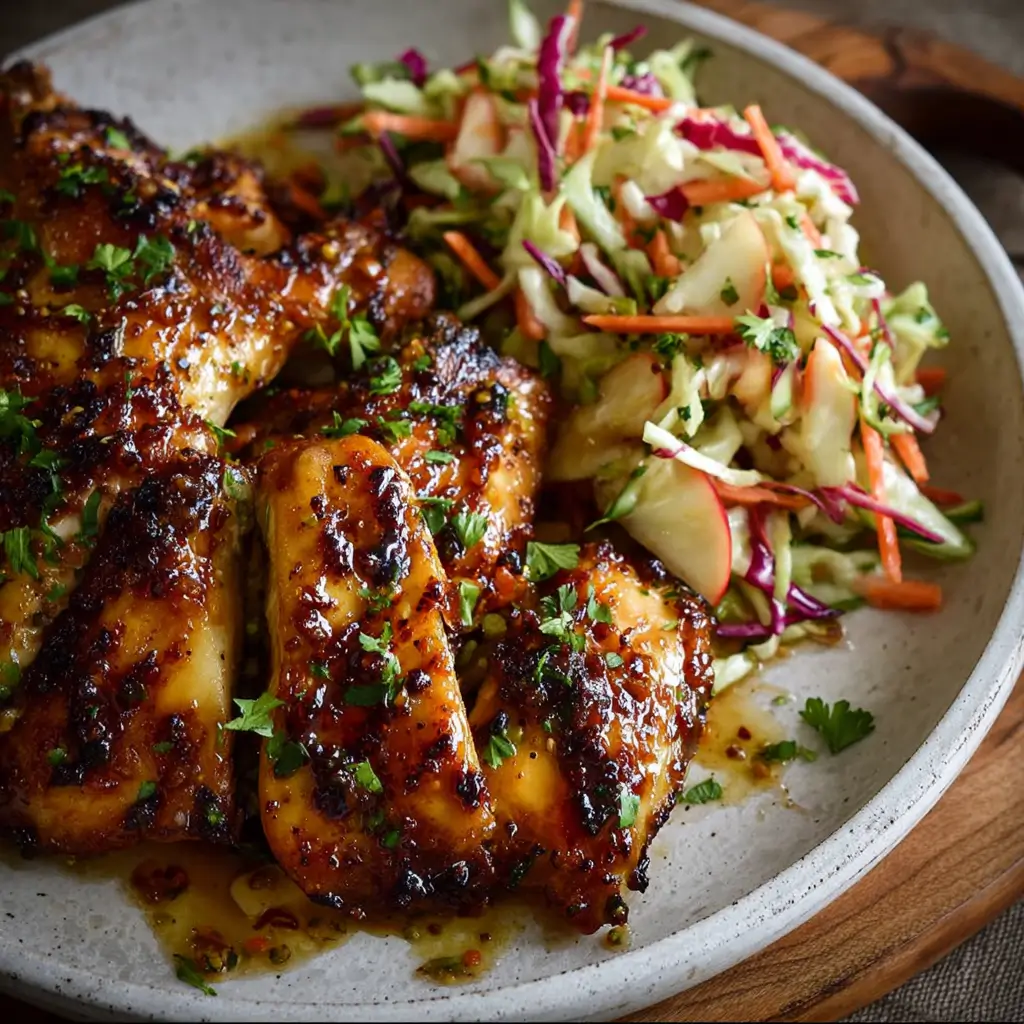
Why The Sticky Apple Cider Chicken with Crisp Autumn Slaw Recipe Deserves a Place in Your Fall Rotation
Autumn cooking means balancing warmth and brightness, something this recipe does beautifully. Here are five irresistible reasons you’ll love Sticky Apple Cider Chicken with Crisp Autumn Slaw:
- Sweet‑savory balance: The glaze pairs unfiltered apple cider and honey for a sticky, caramelized coating. Unfiltered cider retains more pulp and pectin than clear apple juice, giving the glaze body and extra nutrients like polyphenols. A splash of Dijon mustard and garlic balances the sweetness.
- Contrast of textures: Crisp slaw contrasts with tender chicken. Raw cabbage is low in calories yet rich in vitamin C and K, while grated carrots add crunch and fiber. Thin apple slices provide juiciness and a natural sweet‑tart note.
- Wholesome ingredients: Using real apple cider, honey and fresh vegetables means you’re consuming naturally occurring nutrients such as pectin, soluble fiber and antioxidants.
- One‑pan main course: Browning and glazing the chicken in a single skillet reduces cleanup. Deglazing with cider and broth releases delicious browned bits to make a rich sauce.
- Versatile side: The slaw can be customized with whatever produce is available—swap in kohlrabi, fennel or radish for more crunch or add chopped nuts for extra richness.
Ingredients You’ll Need
This recipe relies on simple, seasonal ingredients. Below is an overview of what you’ll need along with notes on why each item matters. Ingredients marked with an asterisk (*) are important for the glaze.
- Chicken thighs: Choose bone‑in, skin‑on thighs for maximum juiciness and flavor. The skin crisps and protects the meat during searing. Chicken should be cooked to an internal temperature of 165 °F (74 °C) according to food‑safety guidelines.
- Unfiltered apple cider:* Raw cider is cloudy because crushed apple pulp and sediments remain suspended. It’s less processed than clear apple juice and contains pectin and polyphenols, which add body and subtle tartness to the glaze.
- Honey:* Provides natural sweetness and helps create a caramelized, sticky texture when reduced. Compared to maple syrup, honey is slightly higher in calories and sugars while maple syrup contains more minerals, feel free to substitute maple syrup for a darker, more earthy sweetness.
- Dijon mustard:* A small amount of mustard cuts through the sweetness and adds depth.
- Garlic:* Fresh minced garlic infuses the glaze with aromatic zest.
- Cabbage: A cup of chopped raw green cabbage provides over half of the recommended daily value for vitamin C and 85 % of vitamin K. Use green or red cabbage, or a mix.
- Carrots: Raw carrots deliver fiber (about 1.7 g per medium carrot), vitamin A (509 µg) and potassium. Grate them finely for even distribution in the slaw.
- Apples: Use a crisp, tart variety like Granny Smith or Honeycrisp. Apples supply soluble fiber and phytochemicals such as quercetin and pectin, which may support cardiovascular health.
- Apple cider vinegar: Adds brightness to the slaw. Vinegar also helps balance the sweetness of the glaze.
- Celery seeds: A pinch of earthy celery seed provides depth in the dressing.
- Fresh herbs: Chopped parsley or chives brighten the dish visually and add a fresh aroma.
Nutrient Highlights
The table below lists key ingredients with notable nutrients (data refers to typical raw portions). These nutrients underline the wholesome character of this dish.
| Ingredient | Key nutrients (per serving) | Notable benefits |
| Apples | Fiber, pectin, vitamin C | Supports gut health and immune function |
| Cabbage | Vitamin C (54 % DV) & K (85 % DV) | Supports immune function and blood clotting; rich in fiber |
| Carrots | Beta‑carotene (vitamin A), fiber, potassium | Promotes eye health and digestion |
| Apple cider | Polyphenols & pectin | Antioxidant and prebiotic benefits |
| Honey | Natural sugars, trace minerals | Provides quick energy and contributes to caramelization |
| Maple syrup (optional) | Higher in calcium and manganese | Offers deeper flavor and lower glycemic index than honey |
Variations and Creative Twists
Adapt this recipe to suit your pantry and preferences. Here are some variations:
- Protein swaps: Chicken breasts, salmon fillets, or boneless turkey tenderloin all benefit from the sticky glaze. Salmon, in particular, pairs wonderfully with the sweet and tangy apple flavors.
- Vegetarian version: Replace chicken with firm tofu or seared tempeh. Tofu benefits from a brief sear before simmering in the glaze. Alternatively, roast thick slices of cauliflower and brush with the cider glaze.
- Heat level: Add a pinch of red‑pepper flakes or cayenne to the glaze for subtle warmth. Smoked paprika also complements the sweet cider.
- Nutty crunch: Toasted pecans or walnuts add richness to the slaw. For a bit of sweetness, toss in dried cranberries or raisins.
- Maple upgrade: Swap honey for maple syrup for a more complex sweetness. Maple syrup contains more calcium and manganese than honey and slightly fewer calories, giving your glaze a deeper, autumnal character.
How to Make Sticky Apple Cider Chicken with Crisp Autumn Slaw
Making this dish is easier than it appears. The chicken cooks in one pan, and the slaw comes together while the glaze simmers. Follow these detailed steps:
- Prepare the sticky glaze
- Combine ingredients: In a small saucepan or skillet, whisk together 1 cup unfiltered apple cider, ⅓ cup honey (or maple syrup), 2 tablespoons Dijon mustard and 2 cloves minced garlic.
- Simmer: Bring the mixture to a simmer over medium heat. Let it bubble gently until reduced by about half and thick enough to coat the back of a spoon. Reduction concentrates flavors and ensures the glaze clings to the chicken.
- Season: Taste and adjust with a pinch of salt and freshly ground pepper. Set aside off the heat.
- Sear the chicken
- Prep the chicken: Pat 4–6 bone‑in, skin‑on chicken thighs dry with paper towels and season generously with salt and pepper. Drying the skin helps it crisp and ensures better caramelization.
- Sear: Heat a heavy, oven‑safe skillet over medium‑high heat. Add a tablespoon of oil. Place the thighs skin‑side down in the hot pan and cook undisturbed until the skin is golden brown and crisp, about 8–10 minutes. Flip and cook the other side for another 2–3 minutes.
- Check temperature: The chicken will finish cooking in the sauce, but browning creates flavor. You’re aiming for color, not full doneness at this stage.
- Glaze and finish cooking
- Add the glaze: Pour the prepared cider glaze over the chicken in the skillet. Reduce the heat to medium‑low.
- Simmer: Spoon the glaze over the chicken as it simmers. Let the chicken cook gently for 10–15 minutes, turning occasionally so each piece becomes coated. If using a thicker cut like chicken breasts, you can finish cooking in a 375 °F (190 °C) oven after coating in glaze.
- Check doneness: For safe consumption, chicken must reach an internal temperature of 165 °F (74 °C). Use an instant‑read thermometer inserted into the thickest part. it’s recommends pulling the chicken at about 160 °F and letting carryover cooking bring it up to temperature for juicy results.
- Make the crisp autumn slaw
- Shred vegetables: While the chicken simmers, finely shred 2 cups of cabbage and 2 medium carrots using a sharp knife or mandoline. Thinly slice one tart apple.
- Prepare dressing: In a large bowl, whisk together 2 tablespoons apple cider vinegar, 1 tablespoon honey or maple syrup, a pinch of celery seeds, salt and pepper. Drizzle in 2 tablespoons olive oil while whisking until emulsified.
- Toss slaw: Add the shredded cabbage, carrots and apples to the bowl. Toss well to coat. For a creamy option, stir a tablespoon of mayonnaise into the dressing.
- Finish: Sprinkle with chopped parsley or chives and refrigerate until ready to serve. For maximum crunch, dress the slaw shortly before eating.
- Plate and serve
- Arrange: Spoon a generous portion of crisp slaw onto each plate. Top with a sticky, glazed chicken thigh and drizzle any remaining glaze over the top.
- Garnish: A shower of fresh herbs adds color. Optionally, sprinkle with toasted nuts for crunch.
Pro Tips for Perfect Results
- Dry the chicken thoroughly: Moisture on the skin inhibits browning. Patting the meat dry before searing yields a crisp, golden crust.
- Reduce the glaze enough: A thick glaze clings to the chicken and won’t run off. Look for the sauce to coat the back of a spoon before adding it to the pan.
- Use tart apples in the slaw: Apples such as Granny Smith or Honeycrisp deliver a refreshing bite and hold their shape better than softer varieties. One medium apple provides about 3 grams of fiber and plenty of phytochemicals.
- Don’t overdress the slaw: Too much dressing weighs down the vegetables. Use just enough to lightly coat so the natural crunch shines.
- Rest the chicken: Allow the chicken to rest for a few minutes after cooking so juices redistribute. Carryover heat will finish cooking the meat.
- Use a thermometer: To ensure food safety, always confirm the internal temperature of poultry reaches at least 165 °F.
Serving Suggestions and Pairings
Sticky Apple Cider Chicken and Crisp Autumn Slaw are filling enough to stand alone, but these complementary sides elevate the meal:
- Roasted root vegetables: Roast butternut squash, sweet potatoes or parsnips with a drizzle of olive oil and sprinkle of cinnamon to mirror the sweetness of the glaze.
- Buttery mashed potatoes: Creamy potatoes soak up extra sauce and provide a comforting base.
- Whole grains: Nutty quinoa, farro or brown rice add texture and fiber. Grains are perfect for absorbing any extra glaze.
- Fresh bread: A crusty baguette or dinner rolls make the meal more substantial and help mop up the sticky sauce.
The table below summarizes suggested sides and their role. Short descriptions keep the table scannable.
| Side dish | Role |
| Roasted root vegetables | Complement the sweet‑savory glaze |
| Mashed potatoes | Provide a creamy base |
| Whole grains | Absorb extra sauce, add fiber |
| Crusty bread | Mop up glaze |
| Dry Riesling | Enhances apple and cider notes |
Make‑Ahead and Storage Tips
Proper storage and reheating ensure the dish remains safe and delicious. Food‑safety guidelines say that leftovers can be stored in the refrigerator for 3–4 days or frozen for 3–4 months. Follow these tips:
- Separate components: Store the chicken and slaw separately in airtight containers. Keeping them apart preserves the slaw’s crunch.
- Refrigeration: Cool leftovers quickly, ideally within two hours of cooking, to prevent bacterial growth. Refrigerate at 40 °F (4 °C) or below.
- Freezing: Freeze only the chicken, as the slaw loses its crispness when frozen. Place chicken in a freezer‑safe container, remove as much air as possible and store for up to two months.
- Thawing: Thaw frozen chicken overnight in the refrigerator. FSIS recommends thawing leftovers in the fridge or in cold water, keeping the food in a leak‑proof bag, and using thawed leftovers within 3–4 days.
- Reheating: Reheat chicken in a skillet over medium heat or in a 350 °F (175 °C) oven until an internal temperature of 165 °F is reached. For microwave reheating, cover the food, rotate for even heating and ensure it reaches 165 °F throughout. Serve slaw freshly dressed for maximum crunch.
Frequently Asked Questions
Is it okay to replace apple cider with apple juice in this recipe? Yes, but expect a milder flavor. Apple cider is less processed and retains pulp and polyphenols, while apple juice is filtered, pasteurized and sometimes sweetened. Using juice will produce a clearer glaze that may be thinner; adding a tablespoon of pectin or reducing the sauce longer can help it thicken.
Is this recipe gluten‑free? All the ingredients listed are naturally gluten‑free. Still, always check labels on condiments like mustard and vinegar to ensure they haven’t been thickened with gluten-containing additives.
What’s the best cut of chicken for this dish? Bone‑in, skin‑on thighs offer juicy meat and crisp skin. Chicken breasts also work; sear thoroughly and finish cooking in the oven to avoid drying out. Make sure the chicken reaches an internal temperature of 165°F when checked with a thermometer.
Can I prepare the slaw ahead? You can shred the vegetables a day ahead and store them separately in the refrigerator. Mix the dressing and toss everything together shortly before serving to maintain crunch. Dressed slaw stored in the refrigerator is best within 24 hours.
Which sweetener is better honey or maple syrup? Honey contains slightly more calories and sugar per tablespoon than maple syrup, while maple syrup provides more minerals like calcium and manganese. Both contain antioxidants. Choose honey for a lighter, floral sweetness or maple syrup for a deeper, caramel‑like flavor.
How sticky should the glaze be? Aim for a glaze that coats the back of a spoon and clings to the chicken without running off. If it’s too thin, continue simmering until it thickens; if it’s too thick, thin it with a bit of apple cider or chicken broth.
Can I make this recipe vegetarian? Yes. Pan‑sear thick slices of tofu or cauliflower, then simmer in the glaze until heated through. Use vegetable broth instead of chicken broth if thinning the glaze, and ensure the internal temperature is hot throughout.
Final Thoughts
Sticky Apple Cider Chicken with Crisp Autumn Slaw captures everything wonderful about fall cooking: cozy flavors, vibrant colors and nourishing ingredients. It transforms pantry staples into a sophisticated yet approachable dinner that satisfies cravings for comfort and freshness. Thanks to the nutrient‑dense produce, apples rich in fiber and quercetin, cabbage loaded with vitamin C and K, and carrots brimming with beta‑carotene, this dish supports wellness while delivering indulgent flavors. Whether you’re serving it on a chilly weeknight or as part of a cozy weekend gathering, the combination of sticky glazed chicken and crisp slaw is sure to impress. Feel free to experiment with seasonal vegetables, spices or sweeteners to make it uniquely yours. Once you try it, you’ll find yourself craving this fall masterpiece long after the leaves have fallen.

